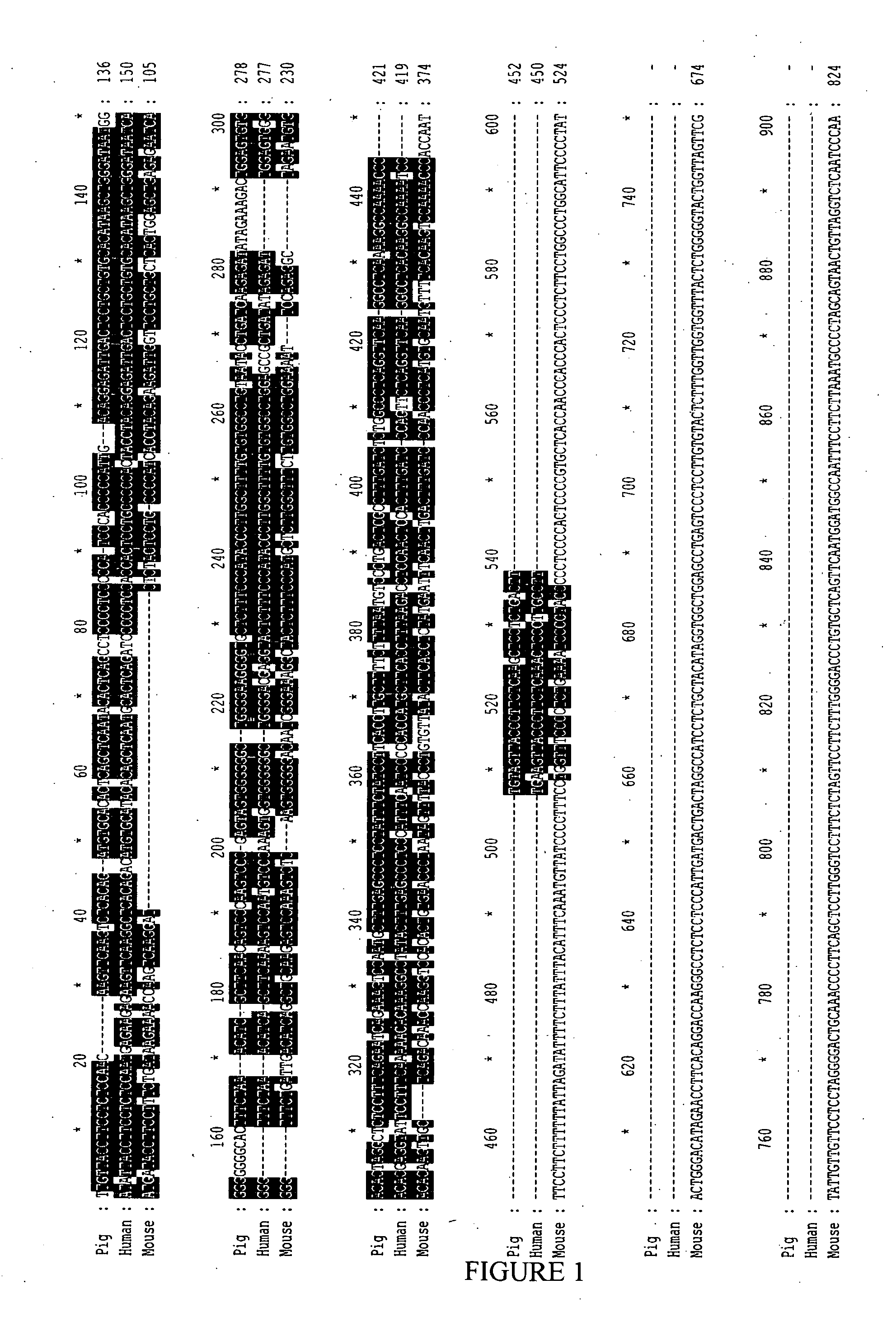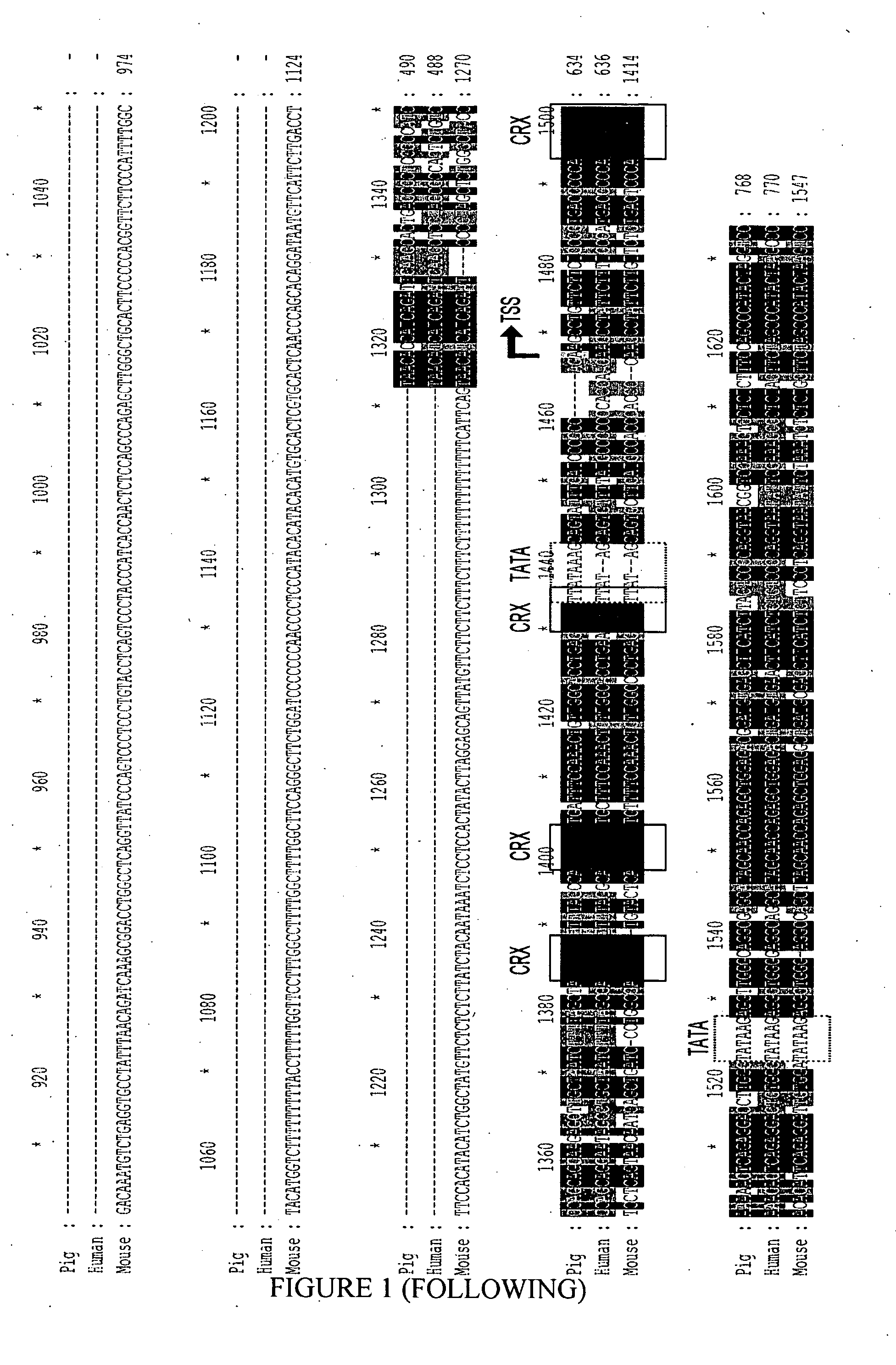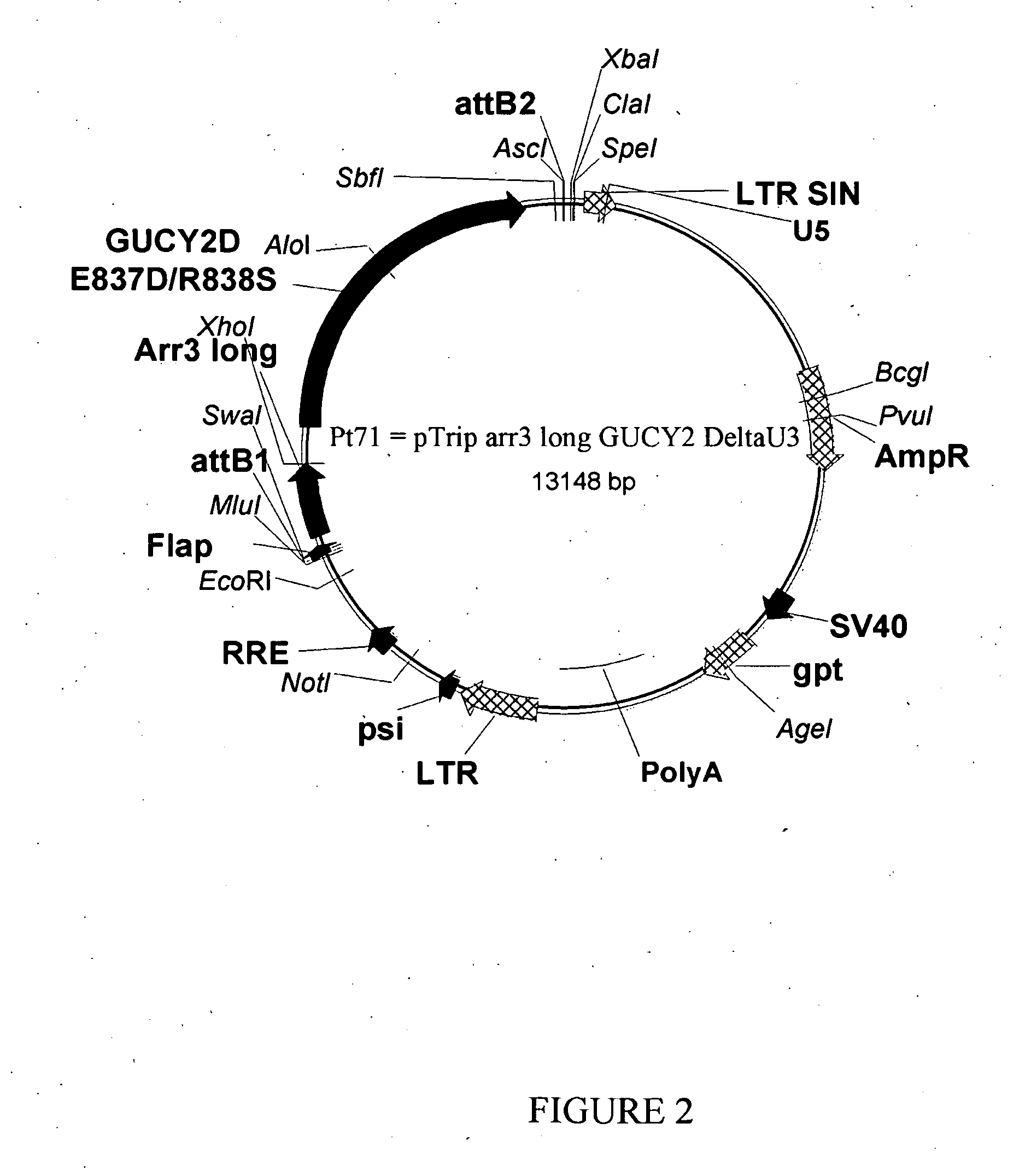Transgenic pig for mutant gucy2d as cone dystrophy model
a technology of mutant gucy2d and pigs, which is applied in the field of transgenic pigs for mutant gucy2d as cone dystrophy models, can solve the problems of poor research interest and unsatisfactory models, and achieve the effect of improving understanding of aetiology
- Summary
- Abstract
- Description
- Claims
- Application Information
AI Technical Summary
Benefits of technology
Problems solved by technology
Method used
Image
Examples
example 1
Porcine Cone Arrestin-3 Promoter Design
[0148]In order to determine the promoter sequence to be used to drive expression in cones, sequence alignment between mouse, human and porcine promoter region of the Cone Arrestin-3 gene (also called mouse Cone Arrestin / CAR in mouse) was performed. Alignment of the pig promoter sequence with human sequence shows more than 70% identity from base −1250 to base +123; with pig to mouse only from base −100 to base +123, from base −450 to −350 and from base −800 to −700 (FIG. 1).
[0149]Firstly a conserved region in the three species of about 250 base pairs was selected (−121, +123). Secondly, because the upstream sequence in mouse differed from the human and porcine, a longer sequence of about 720 base pairs from the porcine promoter was selected (−598, +123).
[0150]The respective sequence of the selected porcine Arrestin 3 short and long promoter regions are described in the SEQ ID NO:5 and SEQ ID NO:6.
example 2
Lentiviral Constructs
[0151]The expressing cassette composed of the short (−121, +123) or long (−598, +193) porcine Arrestin3 promoter sequence followed by the human mutant GUCY2D cDNA (bearing mutations E837D / R838S) were subcloned into the pTrip-RFA plasmid to generate respectively the plasmid called Pt75 (FIG. 3) and Pt71 (FIG. 2). Lentiviral stocks were produced by triple transfection in HEK293T cells with a transcomplementing plasmid p8.9 and a pVSV-G envelope plasmid, as previously described (Grandchamp N. et al., Genet Vaccines Ther. 2011 Jan. 4; 9(1):1). Titration of the stocks was performed using the ELISA technique to measure the capsid p24 concentration, as previously described (Piedrahita, D. et al. (2010). J. Neurosci. 30:13966-13976).
[0152]The cDNA nucleic acid sequence of the wild-type human GUCY2D gene is herein identified as SEQ ID NO:1 and the amino acid sequence of the wild-type human GUCY2D polypeptide is herein identified as SEQ ID NO:2.
[0153]The cDNA nucleic acid...
example 3
Generation of Transgenic Animals
[0155]Embryos were produced from Large-White gilts that were approximately 9 months of age and weighed at least 120 kg at time of use. Super-ovulation was achieved by feeding, between day 11 and 15 following an observed oestrus, 20 mg altrenogest (Regumate, Hoechst Roussel Vet. Ltd., Milton Keynes, UK) once daily for 4 days and 20 mg altrenogest twice on the fifth day. On the sixth day, 1500 international units (IU) of eCG (PMSG, Intervet UK Ltd, Cambridge, UK) were injected at 8:00 P.M. Eighty three hours later 750 IU hCG (Chorulon, Intervet UK Ltd, Cambridge, UK) were injected.
[0156]Donors gilts were inseminated twice 6 h apart after exhibiting heat generated following super-ovulation. Recipient females were treated identically, to donor gilts but remained un-mated. Embryos were surgically recovered from mated donors by mid-line laparotomy under general anesthesia on day 1 following oestrus. (Heat=estrus Day 0). Embryos were injected with the virus ...
PUM
| Property | Measurement | Unit |
|---|---|---|
| time | aaaaa | aaaaa |
| biocompatible | aaaaa | aaaaa |
| nucleic acid | aaaaa | aaaaa |
Abstract
Description
Claims
Application Information
 Login to View More
Login to View More - R&D
- Intellectual Property
- Life Sciences
- Materials
- Tech Scout
- Unparalleled Data Quality
- Higher Quality Content
- 60% Fewer Hallucinations
Browse by: Latest US Patents, China's latest patents, Technical Efficacy Thesaurus, Application Domain, Technology Topic, Popular Technical Reports.
© 2025 PatSnap. All rights reserved.Legal|Privacy policy|Modern Slavery Act Transparency Statement|Sitemap|About US| Contact US: help@patsnap.com



